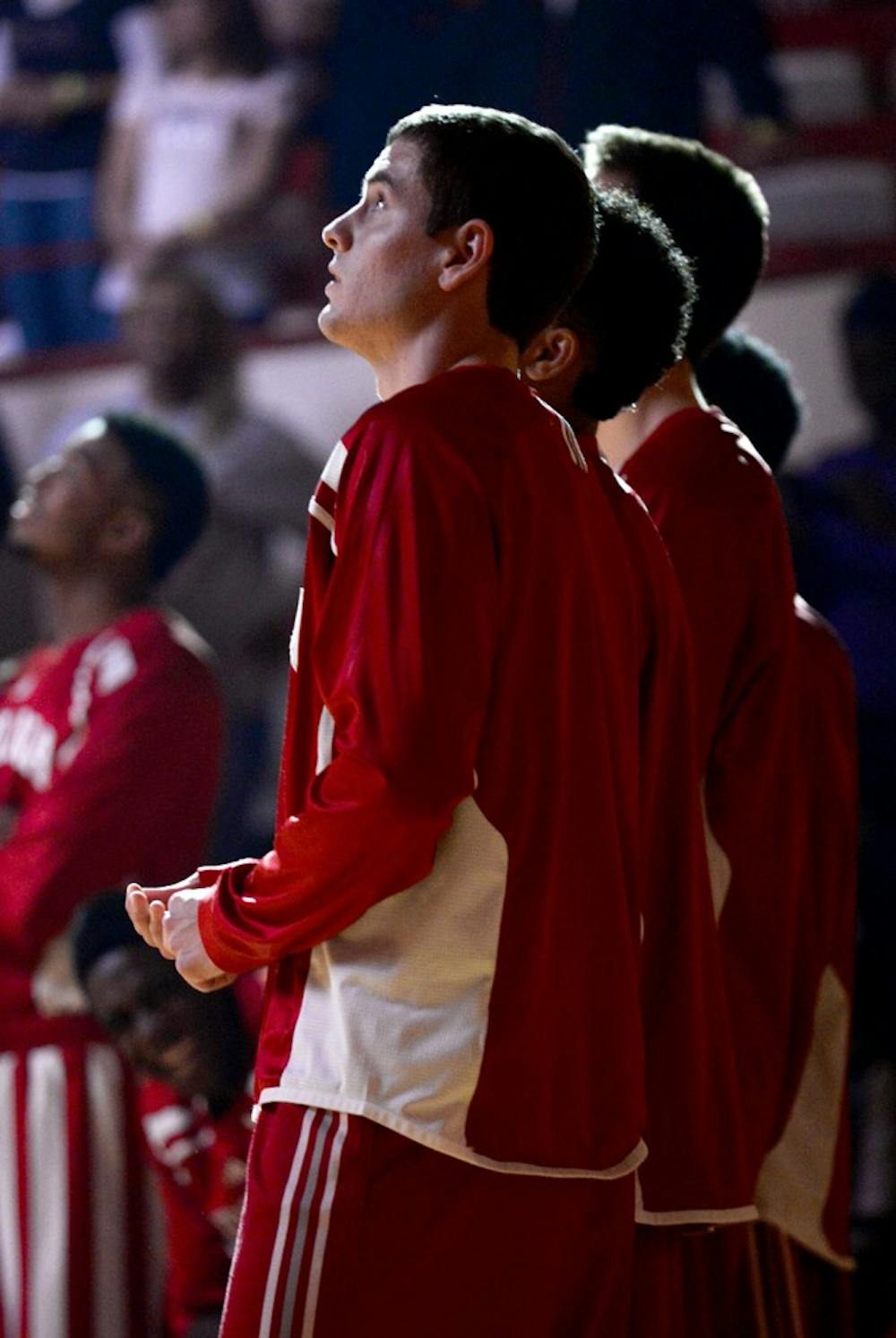The number is downright staggering.
Jeff Goodman, a college basketball reporter for ESPN, decided to publicize The Transfer List. It tracks every player who transferred to another school.
What do you think the number is? How many players transferred teams during the offseason between the 2013-14 and 2014-15 ?seasons?
One hundred? Nope. Not even close.
Three hundred? Still pretty far away.
The answer is 616.
That’s right, 616 players in college basketball transferred teams during the ?offseason.
The IU men’s basketball program was involved in five transfer situations — it lost four players and gained one.
Austin Etherington went to Butler. Jeremy Hollowell went to Georgia State. Peter Jurkin went to East Tennessee State. Jonny Marlin went to Indiana Wesleyan.
And that list doesn’t include Luke Fischer, who transferred to Marquette before the start of the spring semester last season.
Junior guard Nick Zeisloft joins IU after transferring from Illinois State.
The Hoosiers aren’t the only major program afflicted. Butler lost five players due to transfers this season.
Is this a problem?
Frankly, I don’t know. I understand both sides of the argument.
I imagine you’re pretty upset you’re taking the time to read a column that doesn’t offer a solution.
But here’s what I can do for you. I talked to three people at Big Ten Media Day in Chicago who have more knowledge than I do on the subject.
Purdue men’s basketball coach Matt Painter, IU women’s basketball coach Teri Moren and IU men’s basketball coach Tom Crean all offered different insights about the issue of transfers in college basketball.
Tom Crean: “Everybody is right.”
Teams have to account for transfers.
Crean said it’s easier to transfer in college basketball opposed to other collegiate sports.
But is it too easy to transfer in college basketball?
“It’s not my decision,” ?Crean said.
“I didn’t make the rules ... I have not been asked by anybody in the sense of changing the rules. So I try to stay away from the hypotheticals the way they’re at. I think it’s like anything else — you deal with it the way it is.”
Crean said he doesn’t view it as a problem.
It is the way it is. Simple as that.
Teri Moren: “It’s a parent problem.”
Back when Moren played for Purdue, she thought about transferring. She told her parents she wasn’t getting the playing time she wanted.
Her parents had a ?message for her.
“They always said, ‘You’re not coming home,’” Moren said. “They made me figure it out. And I did.”
Parents today, Moren said, don’t hold their kids accountable enough. It’s not a player-specific problem.
Without a solid infrastructure, players don’t have a voice they can count on when they call home and say, “I don’t like it here.”
Moren realizes sometimes transfers are what’s best for a player. She will always try and help a player find a situation where she feels more comfortable, whether that be for more playing time or other reasons.
But some other reasons aren’t so legitimate, she said.
Moren has had starters who wanted to transfer. They were getting good minutes. They were one of the main options on the team. But they wanted out.
It’s those cases Moren doesn’t understand.
“They want to go out to the east, or the west,” ?Moren said.
“Those are the ones that are the head-scratchers. Those are when you go to the parents and say, ‘How are we letting our daughter do this?’ She’s getting minutes. She’s a starter, but she wants something different because it’s easy. It’s amazing why these kids do what they want to do.”
The program made a commitment to the player. Moren believes the player should honor his or her commitment if all is going well.
Matt Painter: “It’s our society.”
Purdue guard Ronnie Johnson transferred this offseason to Houston.
Johnson was a major contributor to the team, averaging the second-most minutes on the Boilermakers and averaging 10.8 points a game, also second on the team.
For Painter, it’s an example of how American society differs from other basketball societies around the world.
In America, players are constantly switching teams, whether that be high school teams, AAU teams or different USA basketball teams.
Internationally that doesn’t happen, he said. Players usually grow up with a single team and don’t have the options of switching teams that their American counterparts do.
“And people ask, ‘What are we gonna do about this?’” Painter said. “I’m like, ‘What do you mean? It’s our society. It’s how these young people are brought up.’”
There are more third parties in basketball than any other sport, Painter said.
High school coaches, AAU coaches, scouting services, — all of these different third parties have an influence in a player’s mind, he said.
“A lot of them just want to please,” Painter said. “But you can’t please anybody. It’s a vicious cycle for young people. They get somewhere, it doesn’t work right away, and they think they’ve made the wrong decision.”
ehoopfer@indiana.edu




